Women Psychoanalysts in Canada
Geschichte
Françoise Boulanger née Girard (1920-1954)
Françoise Marguerite Girard was born in France and completed her studies at the Institute of Psychology in Paris with a diploma in Educational Psychology. She was already a professor of psychology when she began her psychoanalytic training at the Institut de Psychanalyse in Paris. A pupil of Jacques Lacan, she became an associate member of the Société Psychanalytique de Paris (SPP) in 1953. In 1951, she married the Franco-Canadian psychiatrist Jean Baptiste Boulanger (1922–2000), who was then undergoing his psychiatric and psychoanalytic training in Paris. They moved to Canada in 1953 and participated in establishing the Société Canadienne de Psychanalyse
Françoise Boulanger was enthusiastic about the ideas of Melanie Klein and, in 1949, offered to translate Klein’s book The Psycho-Analysis of Children into French. Melanie Klein had engaged Lacan as the translator, but he lost interest in the translation and passed the work on to Françoise Boulanger and her husband. Although Françoise Boulanger did not live to see the publication of La psychanalyse des enfants in 1959 - having died prematurely following surgery - her initiative played a decisive role in introducing Klein's ideas to the French-speaking world. (Top of the article)
- REFERENCES
- Berge, André: Nécrologie: Françoise Boulanger (1920-1954). RFP 18 (3), 1954, 327
- Bulletin de Psychologie 8 (1-2), 1954, 104
- Dagfal, Alejandro: England–France–South America. Melanie Klein's correspondence (1951–1960). IJP 99, 2018, 905-928
- Grosskurth, Phyllis: Melanie Klein. Ihre Welt und ihr Werk (1986). Stuttgart 1993
- Quinodoz, Jean-Michel: De Lacan à Boulanger. Dix ans pour traduire en français "La Psychanalyse des enfants". In Melanie Klein: Lettres à Marcelle Spira. ed. von J. Quinodoz. Paris 2013, 25-32
- Roudinesco, Elisabeth: Jacques Lacan (1993). Frankfurt/M. 1999
- Vigneault, Jacques: Histoire de la psychanalyse au Canada. Filigrane 10 (2), 2001, 7-27 (20.8.2024)
- Vigneault, Jacques: Canada. In Dictionnaire international de la psychanalyse (2002). ed. von Alain de Mijolla. Paris 2005, 271-276
Gabrielle Clerk née Brunet (1923-2012)

Gabrielle Clerk, a pioneer of Canadian psychoanalysis, was born in Ottawa. Her father Raymond Brunet was a construction contractor and Mayor of Hull, Québec, in the 1940s. In 1940, Gabrielle Brunet began studying psychology at the Université de Montréal, where she obtained a license in psychology in 1948 and a PhD in 1953. Her doctoral thesis dealt with the prognostic value of the Rorschach test.
In 1949, she began her academic career as an associate professor at the Université de Montréal's Institute of Psychology where she then taught clinical psychology with a psychoanalytic orientation as a full professor from 1960 until her retirement in 1987. In addition she consulted at Montreal Children's Hospital.
Also in 1949, Gabrielle Brunet married Marc Clerk (1923–2018). They had two children, Nathalie (b. 1950) and David (b.1952).
Gabrielle Clerk obtained her psychoanalytic training at the Institut Canadien de Psychanalyse where, in 1968, she became the first woman in Canada to be licensed as a psychoanalyst. She specialised in psychoanalysis of adults and children and was responsible for the training of child analysts in the Société Canadienne de Psychanalyse. Her teaching focused on projective techniques, child and adolescent psychopathology, research on aggression, and female psychosexuality, emphasising the incorporation of sociological and psychosocial aspects. Her research topics included the role of the mother of the schizophrenic child, object relations and attachment, bisexuality, and fetishism.
In her study La féminisation de la psychologie, Gabrielle Clerk explored the psychoanalytic aspects of the interaction between masculinity and femininity within the sciences, especially psychology. She pointed out the problematic nature of the male-defined principle of objectivity and pleaded for the recognition of a feminine-associated relationship between researchers and their objects.
Gabrielle Clerk died at the age of 89 in Cowansville, Québec. (Top of the article)
- SELECTED WORKS
- De la validité de la méthode de projection Rorschach comme moyen de pronostic psychothérapeutique. Phil. Diss. Montréal 1953
- Object relations and attachment. Implications on the transference in the treatment of adolescents. Contemp Psychoanal 13, 1977, 469-482
- Psychanalyse et vieillesse. Canadian J Psychoanal 3, 1995, 71-86
- Cinquante ans (1945-1995) de pratique analytique avec des enfants. Réflexions et questionnements. Filigrane 9 (2), 2000
- Psychanalyse de l'enfant et de l'adolescent à la Société canadienne de psychanalyse: Historique, questions, réflexions Filigrane 10 (1), 2001
- La féminisation de la psychologie. Enjeux scientifiques et professionnels. RQP 15 (1), 1994, 27-53
- REFERENCES
- David, Hélène: Mme Gabrielle Clerk, 1923-2013. Hommage à une femme, psychologue et psychanalyste. Psychologie Québec 30 (2), 2013, 19 (1.6.2018)
- Cheifetz, Philip: In Memoriam Gabrielle Clerk (née Brunet) 1923-2012. Canadian J Psychoanal 21 (1), 2013, 237-239
- Hanly, Charles: Canada. In P. Kutter (ed.): Psychoanalysis International, Bd. 2: America, Asia, Australia. Further European Countries. Stuttgart-Bad Cannstatt 1995, 55-73
- Obituary Marc Clerc (1923-2018) (2021-10-29)
- Ottawa Citizen, 27 Dec 1948, 58 (2014-03-14)
- The Peerage (2015-11-02)
- Université de Montréal: Les pionnières et pionniers du 125e: Gabrielle Clerk (1923-) (2009-07-17)
- Wright, Mary J.: Women ground-breakers in Canadian psychology: World War II and its aftermath. Canadian Psychology/Psychologie canadienne 33 (4), 1992, 675-682
- Wikipedia: French; English (2025-04-08)
- PHOTO: Université de Montréal
Ruth Easser (1922-1975)
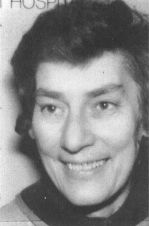
Barbara Ruth Easser was born in Toronto into a Jewish working-class family. Her father, Sam Easser, a machinist who had emigrated from Poland to Canada, was active as a trade unionist and socialist. Her mother, Sarah, who also came from Eastern Europe, shared her husband's political ideals. During World War II, Ruth Easser studied medicine at the University of Toronto, graduating in 1945.
She then moved to the United States, where she completed her psychiatric and psychoanalytic training from 1946 to 1949 at the Columbia University Psychoanalytic Clinic for Training and Research in New York, which was directed by Sándor Radó. Her training analyst was Fanny von Hann-Kende. At the age of 27, she was certified as a psychoanalyst and opened a private practice in New York. In 1953, Ruth Easser became a training analyst and supervisor at the Columbia University Psychoanalytic Clinic, where she served as Admissions Service Supervisor from 1954 to 1967 and taught psychoanalytic technique.
In 1950, she married Stanley R. Lesser (1919–1986), a fellow psychiatrist and psychoanalyst. They raised four children - two adopted daughters and two biological sons. Ruth Easser and Stanley R. Lesser co-authored several psychoanalytic articles. In 1970, they left the U.S. and returned to Toronto, where Ruth Easser became the first female training analyst and supervisor at the Toronto Institute of Psychoanalysis, founded the year prior. Until 1975, she also taught psychiatry at the University of Toronto and Mount Sinai Hospital.
As a gifted teacher and clinician, she had a profound impact on a generation of postwar psychiatrists and psychoanalysts. Her main interest centered on the hysterical and narcissistic personality, the affect development (in the tradition of Radó), and the inhibition of emotions and empathy. Her most important works are Hysterical personality. A re-evaluation (1965, with Lesser), in which she differentiated between hysterical and hysteroid patients; Transference resistance in hysterical character neurosis (1966, with Lesser); and Empathetic inhibition and psychoanalytic technique (1974), which addressed the difficult treatment of narcissistic personality and its marked lack of empathy.
Ruth Easser died of cancer at the age of 53. Her early death left many of her works unpublished. (Top of the article)
- SELECTED WORKS
- A case of amenorrhea showing psychohormonal interrelationships. Psychosom Med 16, 1954, 426-432
- Fate of the transference neurosis at termination. Special reference to the female analyst. Bulletin of The Association for Psychoanalytic Medicine 8, 1968, 22-28
- Affect, the self and psychoanalytic technique. Bulletin of The Association for Psychoanalytic Medicine 13, 1973, 4-8
- Empathetic inhibition and psychoanalytic technique. Psa Quart 43, 1974, 557-580
- Womanhood. JAPA 24, 1976, 631-645
- (und Stanley R. Lesser) Hysterical personality. A re-evaluation. Psa Quart 34, 1965, 390-405
- (und Stanley R. Lesser) Transference resistance in hysterical character neurosis. Technical considerations. In G. S. Goldman and D. Shapiro (eds): Developments in Psychoanalysis at Columbia University. New York 1966
- (und Stanley R. Lesser) The marital life of the hysterical woman. Human Sexuality 4, 1969, 27-37
- (und Stanley R. Lesser) Personality differences in the perceptually handicapped. J Amer Acad Child Psych 11, 1972, 458-466
- REFERENCES
- Greben, Stanley E.: Memory and Appreciation: Dr. B. Ruth Easser. Canadian Psychiatric Association Journal 20 (8), 1975, 566 (2023-11-22)
- O'Neal, Mary Kay: Ruth Easser: Eine Lehrerin für unsere Zeit. IPA Newsletter 4 (2), 1995, 25-26
- O'Neal, Mary Kay, und Paul M. Lerner: Ruth Easser, M.D. Psychanal Rev 85 (1), 1998, 117-138
- O'Neil, Mary Kay: The Unsung Psychoanalyst. The Quiet Influence of Ruth Easser. Toronto 2004
- PHOTO: Canadian Psychiatric Association Journal 20 (8), 1975, 566
Nadia Gargour née Pahilo (1944-1996)
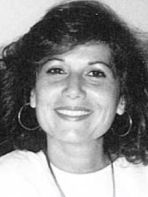
The psychoanalyst Nadia Gargour was born in Egypt. She studied psychology in Montreal and received her BA from the English-language Concordia University in 1978. In 1984, she completed her MA in psychology at the Université de Montréal. Her master's thesis focused on single mothers by choice and their children.
She received her psychoanalytic training at the Canadian Institute of Psychoanalysis, which had been established in Montreal in 1961. She became a member of the Canadian Psychoanalytic Society, where she was the chief administrator for nearly thirty years.
Nadia Pahilo Gargour was married to Gilbert Gargour, with whom she had two children, Brigitte and Philippe. She died at the age of 52 in a car accident. (Top of the article)
- SELECTED WORKS
- La mère célibataire volontaire et son enfant. MA Université de Montréal 1984
- REFERENCES
- Lester, Eva: In Memoriam 1944-96 Nadia Gargour. Canadian J Psychoanal 5 (1), 1997, 179
- La Presse, Montréal, 15.12.1996, C9 (7.7.2023)
- The Thursday Report, Concordia University Montreal 1 (28), June 1, 1978, 12
- PHOTO: Montreal Plus, 13.12.2001, E7 (2023-07-07)
Josette Garon-Léonard
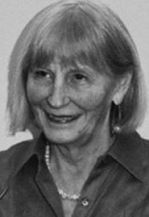
© PUF
The French-Canadian psychoanalyst Josette Garon-Léonard completed her studies at the Département de Philosophie de l'Université de Montréal in 1968. Her dissertation focused on psychoanalysis and art. After her training as a psychoanalyst, she became a member of the Société Psychanalytique de Montréal and opened a private practice in Montreal. She was part of the editorial team of the journal Interprétation, and after it ceased publication in 1981, she co-founded the journal Frayages in 1984 together with Jacques Mauger, Lise Monette, and François Peraldi. Three issues were published until 1987. She is also a member of the scientific advisory board of the journal Filigrane. Today, she practices in Outremont, Québec.
A central focus of Josette Garon’s work is the treatment of adults who were sexually abused as children. In her essay Skeletons in the closet, which she presented at the International Conference “Sandor Ferenczi Clínico” in Turin in 2002, Garon discussed the application of Sándor Ferenczi’s trauma theory in the analysis of traumatized adults. At the heart of her work is the concept of transgenerational trauma, which refers to the unconscious transmission of unspoken family secrets and disavowed traumatic events to subsequent generations, leaving behind foreign bodies that cause great disruption in their psychic lives (cf. Maria Torok). (Top of the article)
- SELECTED WORKS (s. a. BSF)
- Psychanalyse et création artistique, la question du sujet. Thèse (M.A.) Montréal 1968
- Meurtre du père. Dialogue 11 (1), 1972, 109-114
- Le transplant étranger, un écart qui estrange. Trans Nr. 2, 1993, 127-137 (9.7.2009)
- Tout va très bien, Madame la Marquise. In F. Borgogno (ed.): La partecipazione affettiva dell'analista. Il contributo di Sàndor Ferenczi al pensiero psicoanalitico contemporaneo. Milano 1999
- Julien Bigras (1932-1989) ou "Le légendier". Filigrane 9 (2), 2000, 80-103 + 5
- Roger Dufresne raconte la SPM. Filigrane 10, Nr. 2, 2001
- Skeletons in the closet. Int Forum Psychoanal 13, 2004, 84-92 [Scheletri nell'armadio. In F. Borgogno (ed.): Ferenczi oggi. Turin 2004]
- Transmission de brûlants secrets. Trauma, désaveu et (re)construction en analyse. Psychanalyse et psychose Nr. 7, 2007, 115-136
- Libertad o muerte. Terminaison d'une analyse interminable. Psychanalyse et psychose Nr. 10, 2010, 167-174
- From disavowal and murder to liberty. Am J Psychoanal 72 (1), 2012, 33-45
- Gender, sexuality, and the maternal. In Aleksandar Dimitrijević et al. (eds): Ferenczi's Influence on Contemporary Psychoanalytic Traditions. London; New York 2018, 276-281
- (mit Lise Monette und Maurice Leduc) Un certain portrait de famille (1992). Le Coq-Héron Nr. 136, 1995, 9-39
- REFERENCES
- Bigras, Julien: L'histoire de la revue et du groupe Interprétation au sein du mouvement psychiatrique et psychanalytique québécois. Santé mentale au Québec 7, 1982, 3-15 + Érudit (2009-07-08)
- Garon, Josette: "Soul murder" and voluntary servitude: A transgenerational trauma? Vorlesung SFU Institute for the Humanities, 24.3.2017 (2022-05-30)
- Vigneault, Jacques: Canada. In Dictionnaire international de la psychanalyse (2002). ed. von A. de Mijolla. Paris 2005, 271-276 [International Dictionary of Psychoanalysis. Detroit u. a. 2005, 241-246]
- PHOTO: Courtesy of Presses Universitaires de France
Mireille Lafortune (1935-1998)
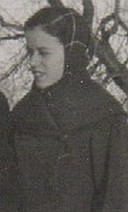
Mireille Lafortune was born in Montreal, the daughter of Omer Lafortune and Mireille née Daoust. In 1956, she married the Canadian psychiatrist and psychoanalyst Julien Bigras (1932-1989), who was studying medicine in Montreal at the time. They had three sons: Daniel (*1957), Jean-François (*1961) and Guillaume (*1964). Mireille Bigras completed her studies in psychology at the Université de Montréal in 1958, before she and her husband moved to Paris in 1960. They stayed there for three years, while Julien Bigras completed his psychoanalytic training and became a member of the Société Psychanalytique de Paris. The couple divorced in 1967.
Mireille Lafortune underwent training analysis with a member of the Société Canadienne de Psychanalyse (SCP), but as a non-medical "lay analyst," she was not admitted to the SCP. In the late 1960s, she decided to practice as an independent psychoanalyst in Montreal. In 1972, she earned her PhD with a dissertation on the feeling of guilt and the choice of a contraceptive method in women. From 1970 to 1991, she served as a professor of psychology at the Université du Québec à Montréal (UQAM), where she was one of the first to teach psychoanalysis. In 1988, she participated in founding the Groupe d'Études Psychanalytiques Interdisciplinaires (GÉPI), an association of psychoanalytically-oriented professors at UQAM.
Like François Peraldi, whose Lacanian seminar she attended in Montreal in 1976, Mireille Lafortune was an adherent of Lacanian ideas. She was particularly interested in questions of femininity, which she explored in her essay Le sujet emprisonné, discussing the feminine as a multiple metaphor in psychoanalysis. In this work, she described two types of representations of the feminine: a phallic one and an archaic one, the latter remaining elusive and pointing to a beyond of language (in the sense of Michèle Montrelay). Lafortune was also interested in approaches to qualitative research in psychology, which she addressed in her book Le psychologue pétrifié.
In the 1970s, Mireille Lafortune advocated for the right to abortion and was briefly involved with the doctor Henry Morgentaler (1923-2013), who fought and won this right in Canadian courts. (Top of the article)
- SELECTED WORKS
- Étude expérimentale de la validité d'un test d'intérêts pour jeunes filles (13 à 18 ans). Lic. Montréal 1958
- Le sentiment de culpabilité et le choix d'une méthode contraceptive chez les femmes. Phil. Diss. Montréal 1972
- Le mémoire et les méthodes qualitatives de recherche en psychologie clinique. Montréal 1977
- La femme est-elle aimable? Bordures, Cahier n°1, 1982
- Psychologie clinique et science. Essai méthodologique. RQP 6 (1), 1985, 2-15
- Entretien avec Michel Dansereau, le 5 Juin 1982. Frayages Juin 1987
- Le sujet emprisonné. RQP 8 (3), 1987, 78-88 (20.7.2009)
- Le psychologue pétrifié ou Du modèle expérimentale comme perversion du discours humaine. Montréal 1989
- REFERENCES
- Dunphy, Catherine: Morgentaler. A Difficult Hero. Toronto 1996
- Fédération Québecoise des Sociétés de Génénalogie 1998 (2022-12-27)
- Geneanet (2022-05-31)
- Roudinesco, Elisabeth, und Michel Plon: Wörterbuch der Psychoanalyse. Namen, Länder, Werke, Begriffe. Wien, New York 2004
- Vigneault, Jacques: Histoire de la psychanalyse au Canada. Filigrane 10 (2), 2001, 7-27
- Wikipedia: Julien Bigras; Dan Bigras (2022-05-31)
- PHOTO: MyHeritage; s. a. Facebook (2024-08-20)
Eva P. Lester née Papamatheaki (1923-2008)
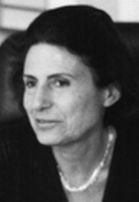
Eva P. Lester was born Evangelie Papamatheaki on the Greek island of Crete. Following WWII, she moved to Athens to study medicine. She specialised in pediatrics and was awarded a Fulbright Scholarship in 1954 to work as a psychiatric resident in Buffalo, New York. In 1955, she married civil engineer Murray Lester (1925–2005), and they had three children.
Eva and Murray Lester moved to Canada in 1956 and settled in Montreal. Eva P. Lester joined the staff of the Allen Memorial Institute (the psychiatric division of the Royal Victoria Hospital) as a resident in 1956, and stayed on for four decades. She was the Director of the Child and Adolescent Branch of the Allen Memorial, as well as Professor of Psychiatry at McGill University in Montreal.
While continuing her psychiatric practice, she trained as a psychoanalyst and became a training analyst, supervisor, and president of the Canadian Psychoanalytic Society. In 1993, she was a co-founder of the journal Canadian Journal of Psychoanalysis, where she served as editor-in-chief until her retirement in 2002.
Eva Lester's areas of focus included female sexuality, clinical and theoretical considerations of pregnancy, and differences in transference and countertransference between male and female patients respectively analysts. Her essay The female analyst and the erotized transference received considerable attention. In it, she discussed the observation that erotized transferences from male patients to female analysts occur less frequently than comparable transferences from female patients to male analysts. Lester concluded that the fear of the phallic mother inhibits the development of an erotized transference in male patients toward female analysts.
In her book Boundaries and Boundary Violations in Psychoanalysis, co-authored with Glenn Gabbard, she examined sexual and nonsexual boundaries and their violations in psychoanalytic theory and practice. These issues were illustrated with examples from the history of psychoanalysis and from clinical work.
In 1998, she received the Sigourney Award for exceptional contributions to the field of psychoanalysis. (Top of the article)
- SELECTED WORKS
- On the psychosexual development of the female child. J Am Acad Psychoanal 4, 1976, 515-527
- Imagery and transference in the analytic process. IJP 61, 1980, 411-419
- Separation-individuation and cognition. JAPA 31, 1983, 127-156
- The female analyst and the erotized transference. IJP 66, 1985, 283-293
- Narcissism and the personal myth. Psa Quart 55, 1986, 452-473
- Gender and identity issues in the analytic process. IJP 71, 1990, 435-444
- Boundaries and gender. Their interplay in the analytic situation. Psychoanal Inq 13, 1993, 153-172
- A surrogate carries a fertilised ovum. Multiple crossings in ego boundaries. IJP 76, 1995, 325-334
- Normal and pathological narcissism in women. In J. Sandler et al. (eds): Changing Ideas in a Changing World: The Revolution in Psychoanalysis. Essays in Honour of Arnold Cooper. London 2000, 87-93
- Sappho of Lesbos.The complexity of female sexuality. Psychoanal Inq 22, 2002, 170-181
- Homosexuality and female sexual response. Vicissitudes in middle age. Psychoanal Inq 23, 2003, 615-623
- (and Erich David Wittkower) Hautkrankheiten in psychosomatischer Sicht. Basel 1963
- (and Malkah T. Notman) Pregnancy, developmental crisis and object relations. Psychoanalytic considerations. IJP 67, 1986, 357-365
- (and Malkah T. Notman) Pregnancy and object relations. Clinical considerations. Psychoanal Inq 8, 1988, 196-221
- (and Malkah T. Notman) Pregnancy. Theoretical considerations. Psychoanal Inq 8, 1988, 139-159
- (with Rose-Marie Jodoin and Brian M. Robertson) Countertransference dreams reconsidered. A survey. Int Rev Psycho-Anal 16, 1989, 305-314
- (and Glen Gabbard) Boundaries and Boundary Violations in Psychoanalysis. New York 1995
- (and Malkah T. Notman) The complexity and plasticity of female sexual choice. Canadian J Psychoanal 9, 2000, 125-136
- REFERENCES
- Alpert, Judith L.: Psychoanalysis and Women. Contemporary Reappraisals. Hillsdale, N.J. 1986
- Hanly, Charles: Canada. In P. Kutter (ed.): Psychoanalysis International, Bd. 2: America, Asia, Australia. Further European Countries. Stuttgart-Bad Cannstatt 1995, 55-73
- Obituary: Eva Lester; Murray Lester (2025-04-10)
- Robertson, Brian M.: Eva Lester: 1923-2008. Canadian J Psychoanal 16, 2008, 149
- Vigneault, Jacques: Canada. In Dictionnaire international de la psychanalyse (2002). ed. von A. de Mijolla. Paris 2005, 271-276 [International Dictionary of Psychoanalysis. Detroit u. a. 2005, 241-246]
- Zack, Deborah: Eva Lester, a modern psychoanalyst. A discussion of her scholarship. Canadian J Psychoanal 17, 2009, 263-268
- PHOTO: The Sigourney Award (2019-07-24)
Lise Monette

The Canadian psychoanalyst Lise Monette taught philosophy at Collège Saint-Denis in Montréal from 1962 to 1966. From 1966 to 1969, she studied with Raymond Aron at the École Pratique des Hautes Études in Paris and attended Jacques Lacan’s Seminar. Upon returning to Canada, she taught philosophy at the Cégep de Sorel-Tracy before taking a position at the Université du Québec à Montréal (UQAM) in 1970, where she was a professor of philosophy until 1994.
After undergoing a personal analysis, Lise Monette trained in psychoanalysis at the Société Psychanalytique de Montréal (SPM). One of her supervisors was Clifford Scott. She participated in the Lacanian seminar initiated by François Peraldi in 1976 at the Université de Montréal and gained clinical experience at the Saint-Jean-de-Dieu psychiatric hospital and the Ste-Justine children’s hospital in Montréal. In 1978, she became a member of the SPM and served from 1988 until her retirement as a training analyst and supervisor at the Institut Psychanalytique de Montréal (IPM). Together with Jacques Mauger, she led an introductory seminar on Lacan’s thought there for several years. From 1991 to 1993, she served as president of the SPM; from 1993 to 1995, she was director of the IPM; from 1997 to 1999, president of the Société Canadienne de Psychanalyse; and beginning in 2003, she directed the Institut Canadien de Psychanalyse for two years. She was also co-editor of the now-defunct journals Frayages and Trans.
The two central themes in Lise Monette’s work are mourning and femininity. She addressed mourning, for instance, in relation to her theses on the melancholic side of the psychoanalytic vocation, countertransference as a process of mourning, and the analysis of melancholic patients (“fidèles de la mort”). Key concepts in her psychoanalytic theory of the feminine - drawing especially on Joan Riviere and Luce Irigaray - include polymorphism, undecidability, and masquerade.
Lise Monette was particularly interested in the epistemological foundations of psychoanalysis. Since psychoanalytic knowledge concerns the unconscious and the repressed, it can only ever be partial, fragmentary, and conjectural. Her central theses are concisely presented in the essay Pure culture, co-authored with Jacques Mauger, which explores the analyst’s resistance to the psychoanalytic process. (Top of the article)
- SELECTED WORKS
- Le processus contre-transférentiel comme travail de deuil. Philosophiques 4 (2), 1977, 305-312
- L'éphémère. Frayages Nr. 1, 1984, 5-16
- L'assomption subjective de l'ordre symbolique. Cahiers Recherches et Théories Nr. 58, 1987, 253-261
- Malaise dans le religieux. Frayages Nr. 3, 1987, 83-93
- The Nietzschean interpretation... of Freud as thought on the fragmentary, as fragmentary thought. In T. Darby et al. (eds): Nietzsche and the Rhetoric of Nihilism. Ottawa 1989, 71-80
- Les fidèles de la mort. Santé mentale au Québec 15 (2), 1990, 212-220
- Polyphonie. In B. Tanguay (ed.): Les voies de la recherche clinique en psychanalyse. Montréal; Toulouse 1991, 125-135
- À perte de vue. Trans Nr. 1, 1992, 37-48
- Syncope du discours, figures de la négativité. In M. Nevert (ed.): Les accros du langage. Montréal 1993, 61-71
- 14 + 1. Trans Nr. 3, 1993, 119-130
- L'import/export de concepts. Trans Nr. 2, 1993, 69-80
- (mit Josette Garon-Léonard und Maurice Leduc) Un certain portrait de famille (1992). Le Coq-Héron Nr. 136, 1995, 9-39
- (und Jacques Mauger) Pure culture. RFP 64 (5), 2000, 1391-1460
- REFERENCES
- Corin, Ellen: Lise Monette. Une pensée en élan. Filigrane 13 (1), 2004, 83-127
- Roudinesco, Elisabeth, und Michel Plon: Wörterbuch der Psychoanalyse. Wien, New York 2004
- Senécal, France: La supervision en psychanalyse. Mutualité, assymétrie et refusement. Entrevue avec Lise Monette et Bernadette Tanguay. Filigrane 18 (1), 2009, 76-84
- Vigneault, Jacques: Canada. In Dictionnaire international de la psychanalyse (2002). ed. von A. de Mijolla. Paris 2005, 271-276 [International Dictionary of Psychoanalysis. Detroit u. a. 2005, 241-246]
- PHOTO: Still from "Variations sur le thème de l’inconscient". Université du Québec à Montréal 1999